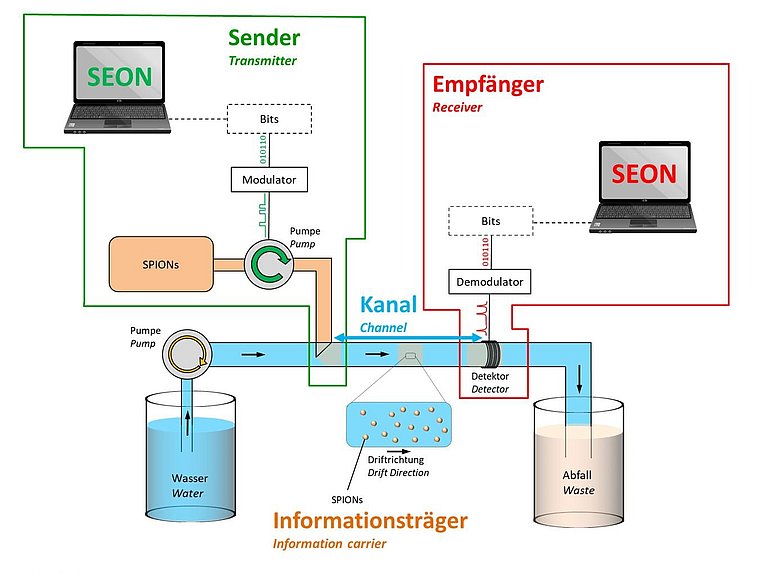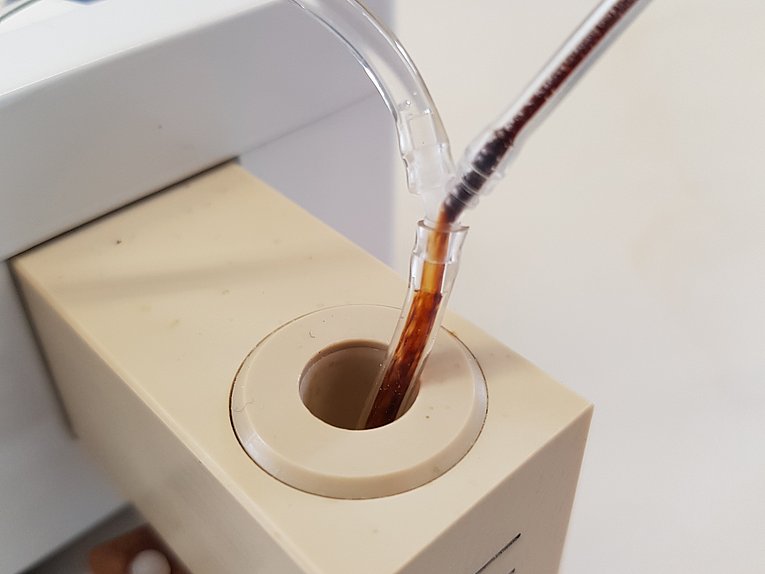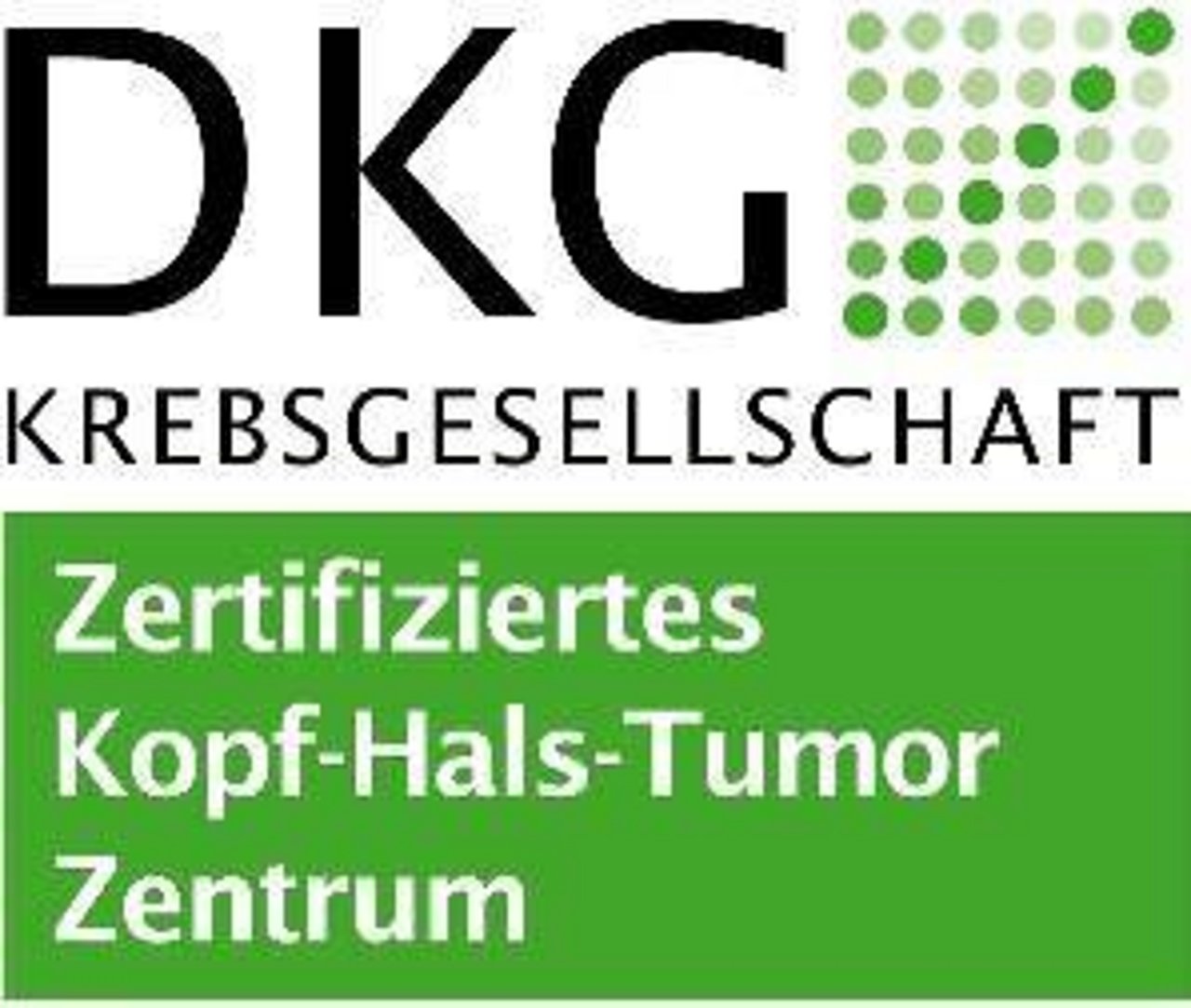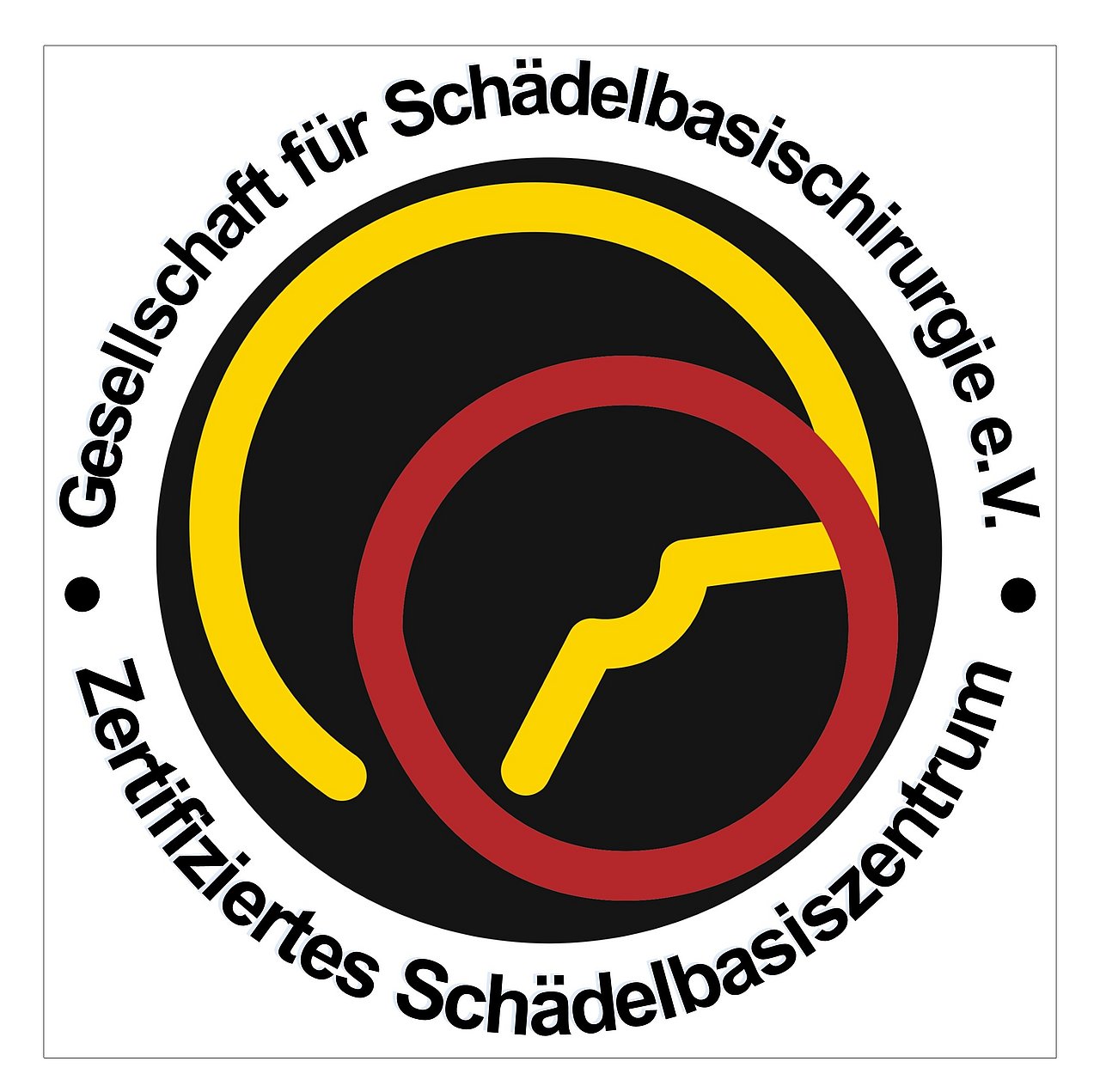Conventional wireless communication systems use electromagnetic (EM) waves to transmit information. This approach is well suited for many conventional applications, such as cellular radio, cable transmission, etc. However, EM-based communication systems are often unsuitable for applications where network nodes with dimensions in the nano or micro range need to communicate, or for communication in difficult environments, such as in liquids or in explosive gases. For such applications, the new concept of molecular communication (MC) has been proposed. The figure opposite shows the basic structure of a possible particle-based MC. Here, molecules or very small particles with dimensions in the range of micro- to nanometers are used as information carriers. These information carriers are guided by a transmitter into a transmission path, the so-called channel, which leads them to a receiver where the particles can be detected. If the particles are transmitted in a particular pattern, information can be imprinted in the way and transmitted along with it.
While the majority of previous work in this field has focused on nano- and micro-applications - often with a biological or medical connection - the suitability of MC for macroscopic industrial applications is also increasingly being investigated. For this purpose, the necessary communication and information theory tools, a powerful simulation environment and flexible testbeds and demonstrators need to be developed.
Macroscopic Molecular Communication (MaMoKo)
BMBF Funding, 2018-2022
Project goal
The overall objective of the collaborative project is to investigate the suitability of macroscopic MC for industrial applications. To this end, liquid- and air-based macroscopic MC systems will be designed and demonstrated. For this purpose, all necessary functionalities (e.g. modulation, channel estimation, and detection methods) and tools (e.g. analytical methods, efficient simulation environments, suitable testbeds and demonstrators) will be developed step by step. Furthermore, concrete application scenarios ("use cases") for MC will be developed and the respective advantages and disadvantages of the proposed MC concepts will be evaluated in comparison to existing alternative solutions.
Collaboration partners
- Prof. Robert Schober, IDC, FAU Erlangen-Nuremberg
- Prof. Georg Fischer, LTE, FAU Erlangen-Nuremberg
- Dr. Dr. Jens Kirchner, LTE, FAU Erlangen-Nuremberg
- Prof. Holger Boche, TU Munich
- Prof. Peter Adam Höher, Christian-Albrechts-University zu Kiel
- Prof. Hans Schotten, TU Kaiserslautern
- Prof. Falko Dressler, University Paderborn
Molecular Communication systems (MolCom)
Emerging Field Initiative, FAU, 2017-2019
Project goal
In recent years, researchers have explored the use of molecular communication (MC) as the basis for man-made communication systems at the nanoscale and microscale, ultimately leading to the emergence of a new field of research in communication. This EFI project will bring together experts in communications, mathematics, electronics, synthetic biology, biochemistry, biomaterials, and medicine to decisively advance the theoretical foundations of MC and create the world's first MC testbed.
Collaboration
- Prof. Dr. Robert Schober, FAU
- Prof. Dr. Aldo R. Boccaccini, FAU
- Prof. Dr. Andreas Burkovski, FAU
- Prof. Dr. Georg Fischer, FAU
- Prof. Dr. Günther Grün, FAU
- Prof. Dr. Heinrich Sticht, FAU
- Prof. Dr. Robert Weigel, FAU








